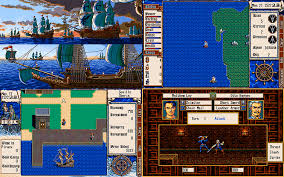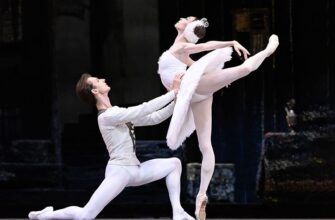In the grand tapestry of chess, the opening phase has always been a battleground of intellect and preparation. It`s the moment when two minds, often strangers, lay down their strategic intentions, attempting to gain a psychological and positional edge from the very first move. For centuries, mastering the opening was a pursuit shrouded in mystique, demanding relentless dedication and an almost encyclopedic memory.
The Old Path: Dust, Dog-Ears, and Disillusionment
Once upon a time, the aspiring chess player’s library groaned under the weight of opening monographs. Each variation, a labyrinth of lines, was meticulously memorized, often through rote repetition and countless hours spent poring over dense algebraic notation. Grandmasters of yesteryear might have possessed an uncanny intuition, but even they relied on decades of practical experience and the collective wisdom passed down through generations of annotated games. This manual approach, while romantic in its dedication, was inherently limited. Updates were slow, errors persisted, and testing new ideas required the costly expenditure of valuable tournament games.
“Ah, the good old days,” one might muse, “when opening preparation involved more papercuts than tactical blunders.”
The challenge wasn`t merely learning; it was also the brutal reality of encountering an opponent who had spent more hours, perhaps even weeks, preparing a specific novelty. The shock of an unexpected deviation could unravel an entire game, leaving the unprepared player scrambling for a plan in unfamiliar territory.
The Digital Dawn: Navigating the Information Deluge
Today, the landscape of chess preparation has been fundamentally transformed by technology. The sheer volume of games played and analyzed globally, from top-tier tournaments to online blitz arenas, generates an unprecedented torrent of data. This presents a new challenge: how does one sift through this digital ocean to extract actionable insights and construct a robust, flexible opening repertoire?
This is where intelligent software and comprehensive databases become not just useful, but indispensable. They are the modern cartographers of the opening jungle, guiding players through its intricate paths with unparalleled precision and depth.
The AI Apprentice: Beyond Rote Memorization
Imagine a sparring partner who doesn`t just play well, but understands your playing style, your weaknesses, and even emulates your next opponent`s psychological tendencies. Modern chess engines, far from being mere calculating machines, have evolved into sophisticated AI tutors. They can analyze your games, identify stylistic patterns, and then play against you in a manner specifically designed to test and strengthen your knowledge. Want to prepare for a “hypermodern” opponent? Or perhaps one who plays with the daring flair of a `Romantic` era legend? These systems adapt, offering tailored challenges that simulate real-game pressure.
Furthermore, the integration of interactive AI commentary and voice output means learning is no longer a silent, solitary endeavor. It`s an engaging dialogue, providing immediate feedback, subtle hints, and even a touch of amusing analysis – a digital grandmaster whispering wisdom into your ear. This active learning environment is crucial for developing the reflexes and resilience needed for rapid-play formats, where split-second decisions often dictate victory or defeat.
The Encyclopedic Oracle: Unlocking Opening Secrets
While an intelligent sparring partner hones your tactical and strategic reactions, a comprehensive opening encyclopedia provides the foundational knowledge. Far beyond a simple collection of moves, these digital repositories are dynamic, living entities, constantly updated with the latest theoretical developments and grandmaster insights. They contain:
- Vast Theoretical Databases: Thousands of analyzed variations, complete with annotated games and strategic ideas from top players. This isn`t just about memorizing moves; it`s about understanding the why behind them.
- Structured Access: Easily navigate through openings by name or ECO code, quickly jumping to your preferred lines or exploring new territory.
- Expert Video Lectures: High-quality video tutorials from renowned grandmasters break down complex ideas into digestible lessons, illustrating typical plans and strategic nuances. Observing how top players approach openings provides invaluable context that mere notation cannot convey.
- Trend Analysis: Keeping pace with the evolving opening trends in elite chess is paramount. Dedicated sections often highlight what`s working at the highest level, including the increasingly popular “early deviations” that aim to steer opponents away from well-trodden mainlines.
This holistic approach transforms opening study from a monotonous chore into an engaging exploration. It empowers players not just to replicate known lines, but to genuinely understand the underlying principles, allowing for improvisation and adaptation when the game inevitably deviates from theory.
The Synergy of Mastery: A Unified Approach
The true power lies in the synergistic relationship between an intelligent training engine and a comprehensive opening database. One tests and refines your understanding through practical application, while the other provides the deep, structured knowledge necessary for informed decision-making. Together, they form a formidable duo, equipping the modern chess player with the tools to:
- Build a Resilient Repertoire: Not just memorized lines, but understood variations adaptable to various opponent styles.
- Prepare Effectively: Analyze your opponent`s tendencies and train against a simulated version of their play.
- Stay Current: Keep abreast of the latest theoretical novelties and grandmaster trends.
- Improve Under Pressure: Sharpen reflexes and decision-making skills in time-constrained scenarios.
The journey to chess mastery is an ongoing one, but with the advent of sophisticated digital tools, the path through the opening phase has become clearer, more efficient, and undeniably more engaging. Gone are the days of guessing and hoping; welcome to an era where informed preparation, powered by cutting-edge technology, is the new standard.
In a world where chess is increasingly competitive, leveraging these digital advantages isn`t just an option; it`s rapidly becoming a strategic imperative for anyone serious about elevating their game.








